Find Help
More Items From Ergsy search
-
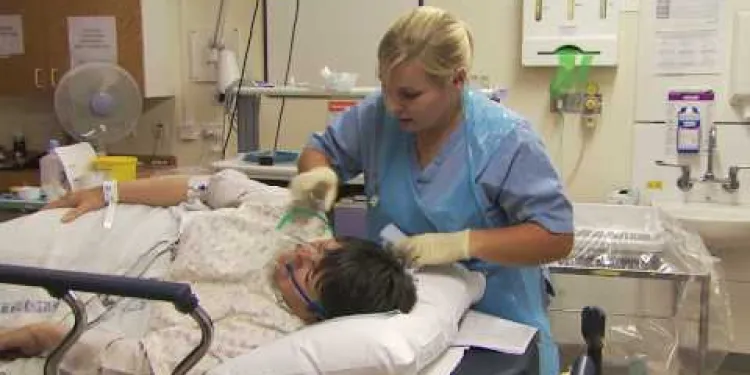
Bournemouth Digestive Diseases Centre: Endoscopy Procedure
Relevance: 100%
-
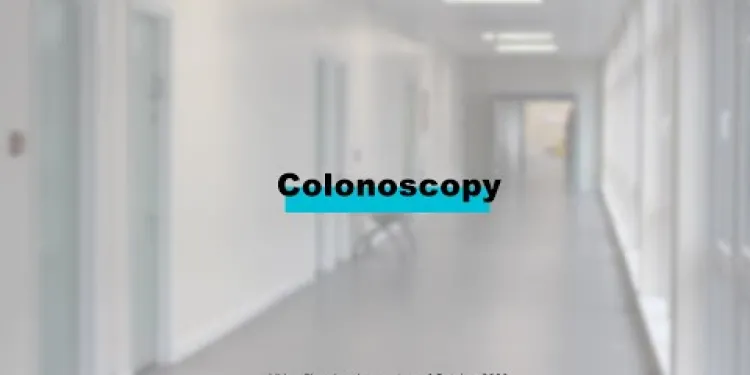
Endoscopy Procedures | Colonoscopy
Relevance: 58%
-
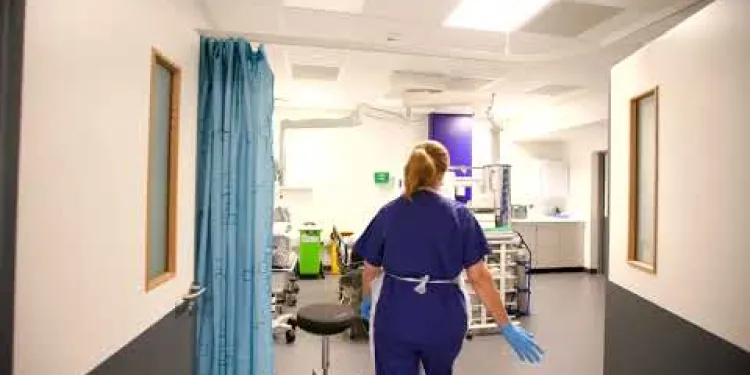
Endoscopy Unit
Relevance: 57%
-
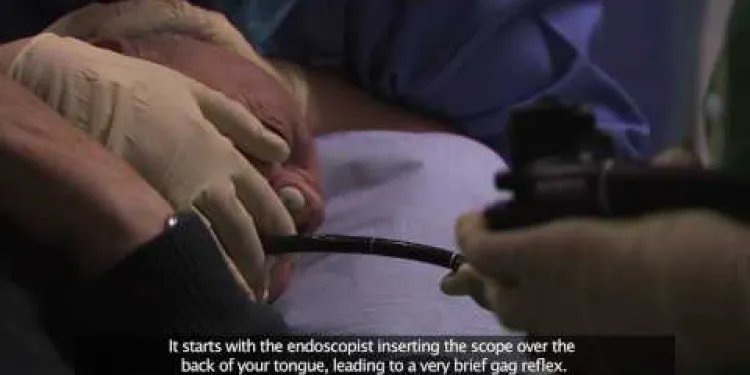
Bournemouth Digestive Diseases Centre: Gastroscopy Procedure (Subtitled)
Relevance: 55%
-
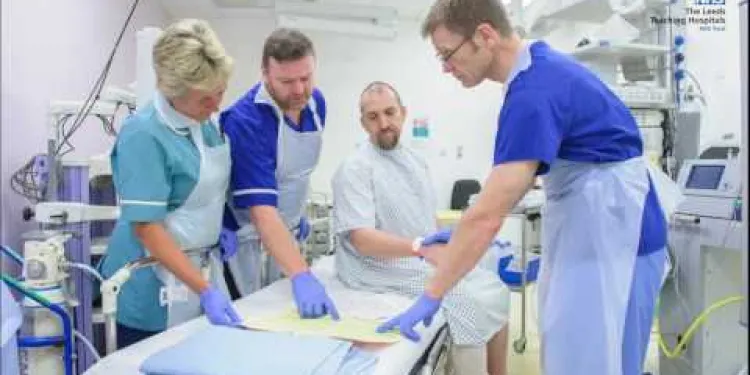
Endoscopy Introduction - The Patient Journey
Relevance: 52%
-
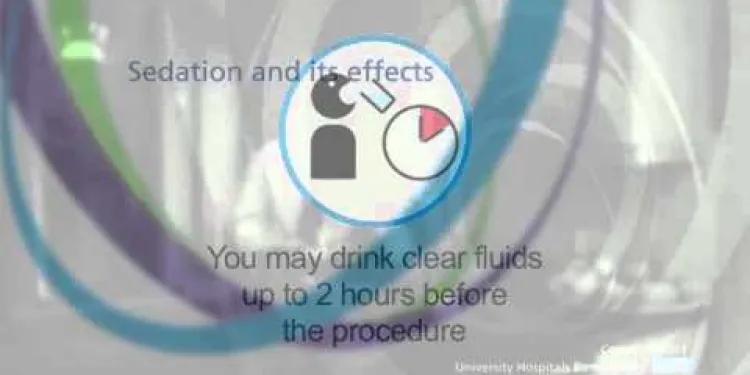
Endoscopy video preview
Relevance: 51%
-
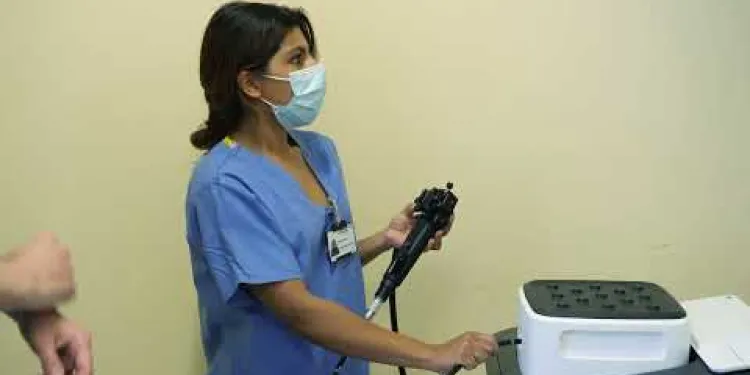
MTW Endoscopy service and training hub
Relevance: 44%
-
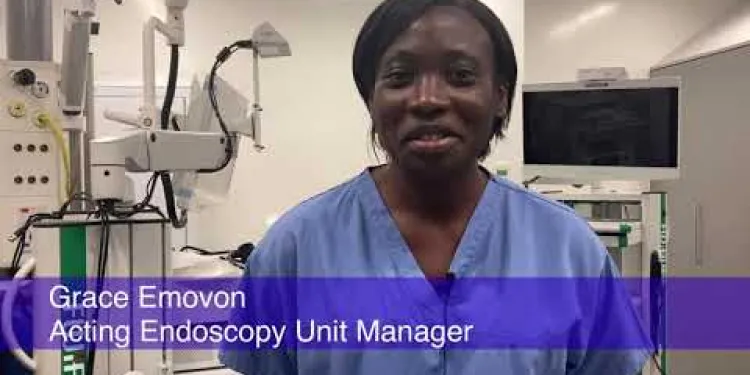
Coming to the Endoscopy Unit at Harrogate District Hospital
Relevance: 43%
-

Mark Lancaster Patient Experience Leeds Endoscopy
Relevance: 43%
-
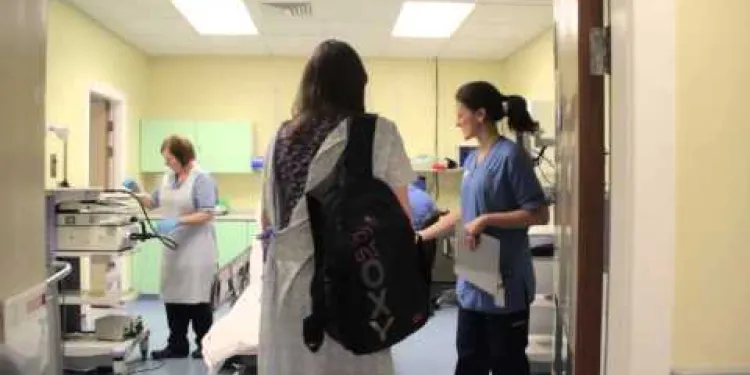
Your Visit to the Endoscopy Unit at NHS Tayside
Relevance: 42%
-
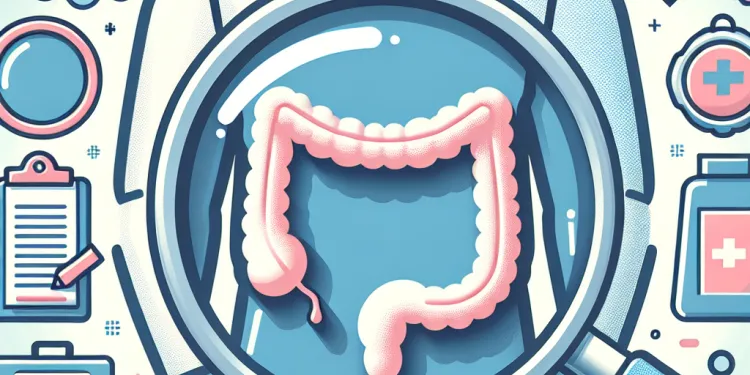
How is Crohn's disease diagnosed?
Relevance: 42%
-
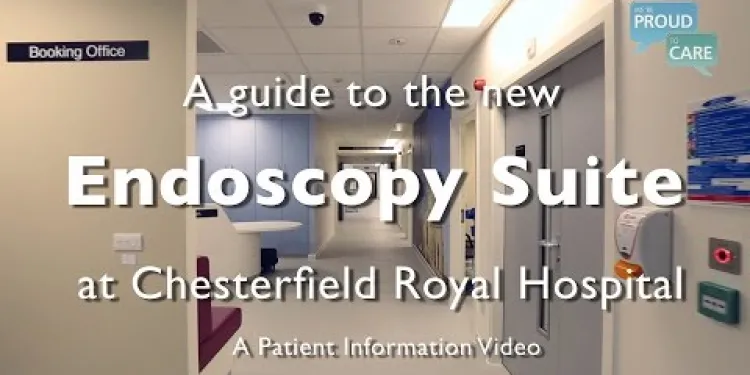
A guide to the new Endoscopy Suite at Chesterfield Royal Hospital NHS Foundation Trust
Relevance: 41%
-

Can children develop Crohn's disease?
Relevance: 29%
-
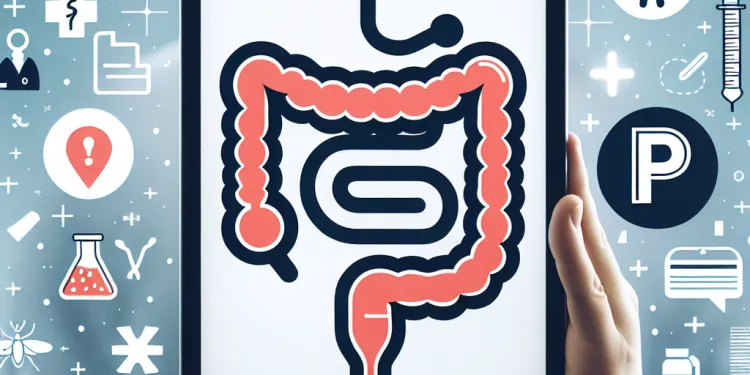
Is surgery necessary for Crohn's disease?
Relevance: 27%
-

Is Crohn's disease contagious?
Relevance: 25%
-

Will I feel pain during the procedure?
Relevance: 25%
-
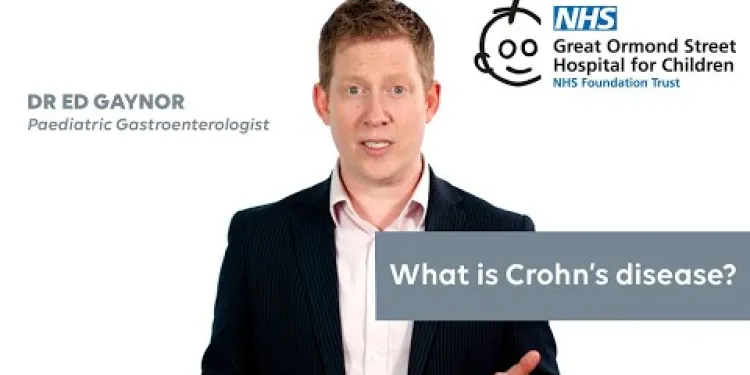
What is Crohn’s disease and how is it treated?
Relevance: 25%
-
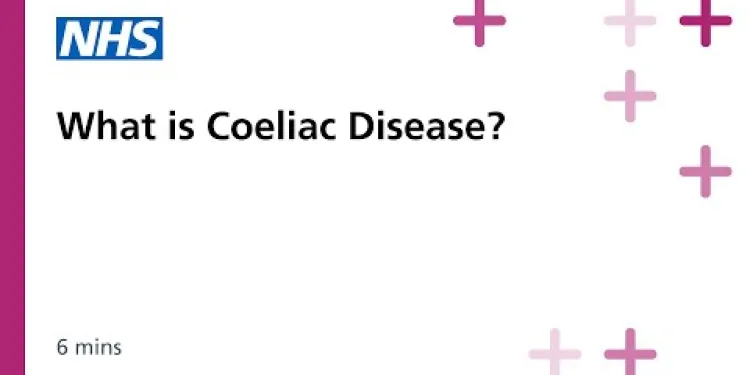
Coeliac Disease: Session 1: What is Coeliac Disease?
Relevance: 25%
-

Is a C-section a common procedure in the UK?
Relevance: 25%
-
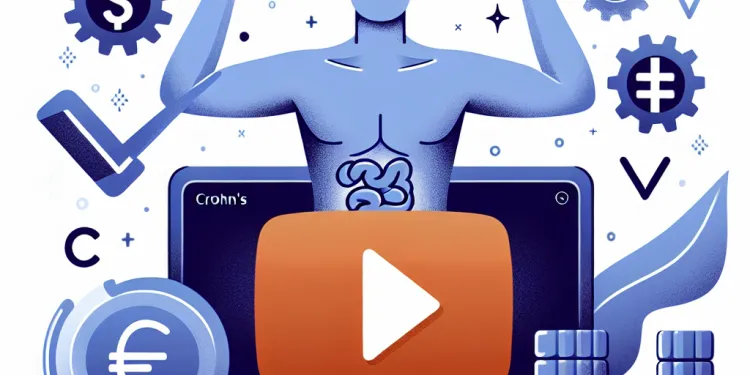
What are the common symptoms of Crohn's disease?
Relevance: 25%
-
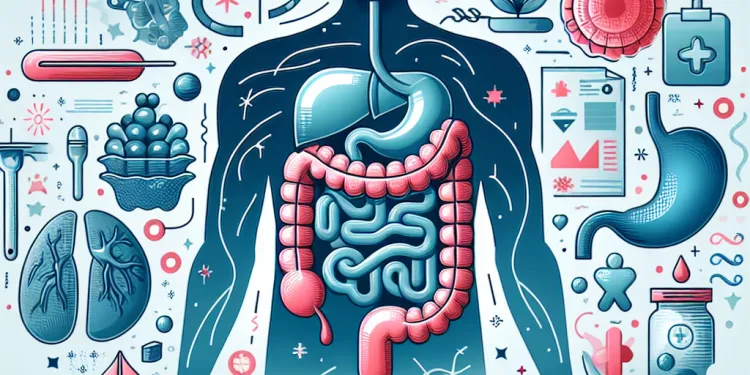
Are there any complications associated with Crohn's disease?
Relevance: 25%
-

Can a facelift be combined with other procedures?
Relevance: 24%
-

Liver disease | NHS
Relevance: 24%
-

What is the best diet for Crohn’s disease?
Relevance: 23%
-
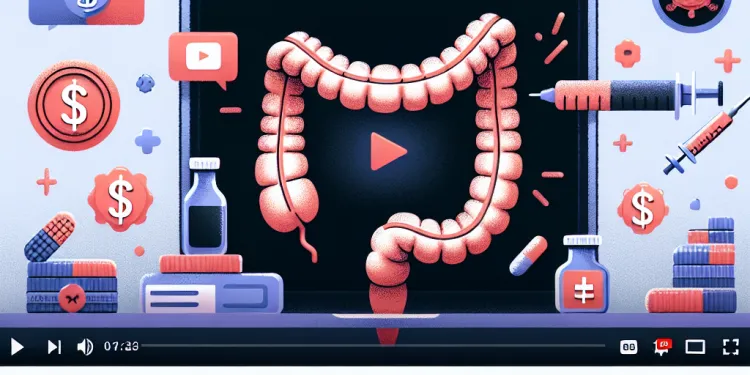
What causes Crohn's disease?
Relevance: 23%
-

NHSGGC - What is Coeliac Disease?
Relevance: 23%
-
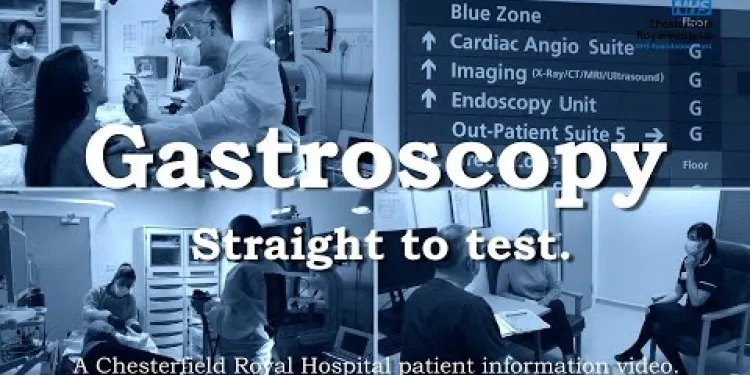
Gastroscopy - What to Expect on Referral to Chesterfield Royal Hospital
Relevance: 22%
-
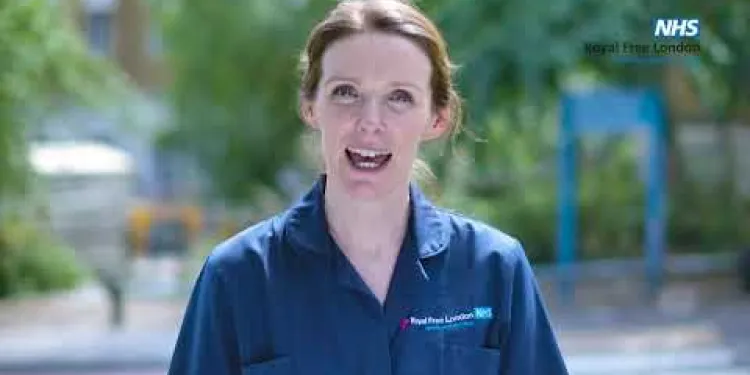
Having an operation or procedure at the Royal Free London
Relevance: 22%
-

What dietary changes can help manage Crohn's disease?
Relevance: 22%
-

What is the procedure for receiving mail?
Relevance: 22%
-

Coeliac disease
Relevance: 21%
-

Can stress make Crohn's disease worse?
Relevance: 21%
-

Causes of coeliac disease
Relevance: 21%
-

Symptoms of coeliac disease
Relevance: 21%
-
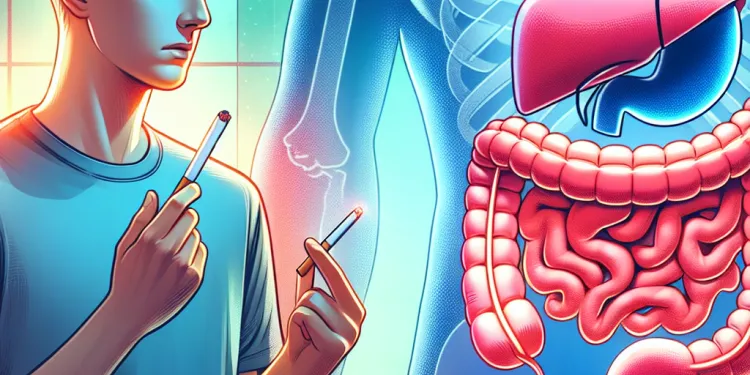
How does smoking affect Crohn's disease?
Relevance: 21%
-
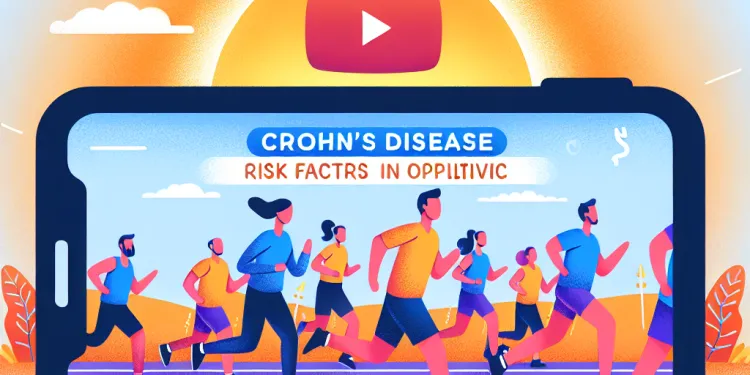
Who is at risk of developing Crohn's disease?
Relevance: 20%
-
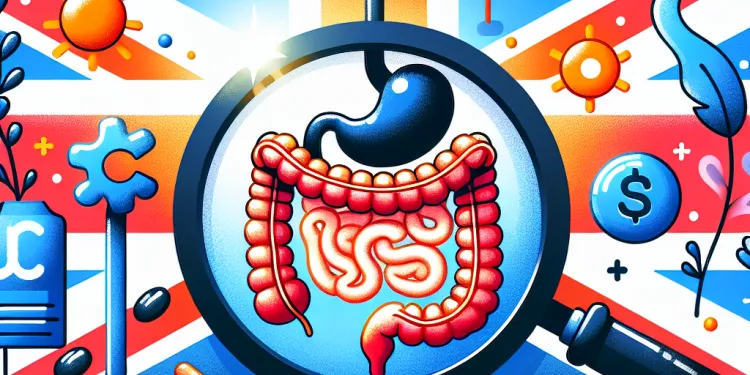
Is there a cure for Crohn's disease?
Relevance: 20%
-

How is blood screened to prevent disease transmission?
Relevance: 19%
-

Coeliac Disease Explained - Gluten Sensitivity - A to Z of the NHS - Dr Gill
Relevance: 19%
-

What is heart valve disease?
Relevance: 19%
Bournemouth Digestive Diseases Centre: Endoscopy Procedure
Overview of Endoscopy
Endoscopy is a non-surgical procedure used to examine a person's digestive tract using an endoscope, a flexible tube with a light and camera attached. At Bournemouth Digestive Diseases Centre, we utilise state-of-the-art technology to diagnose and treat a wide range of gastrointestinal conditions, ensuring the highest levels of patient care.
Preparation for the Procedure
Before undergoing an endoscopy, patients are typically required to fast for a specific period, usually around 6 to 8 hours. It is crucial to follow these instructions to ensure a clear view of the digestive tract. Medication adjustments might also be necessary, and it's important to inform the centre about any allergies or existing medical conditions.
The Endoscopy Process
During the procedure, patients at Bournemouth Digestive Diseases Centre can expect a comfortable and efficient process. A mild sedative may be administered to help relax. The endoscope is gently guided through the mouth, down the oesophagus, and into the stomach and small intestine. The real-time visuals captured by the camera enable precise diagnosis and, if needed, biopsy samples can be collected.
Post-Procedure Care
After an endoscopy, patients typically experience minimal discomfort. Some may feel a mild sore throat or bloating, which usually resolves within a few hours. It's advised to arrange for someone to drive you home due to the sedative effects. The medical team at Bournemouth Digestive Diseases Centre will discuss the findings and plan any further treatment if necessary.
Benefits of Choosing Bournemouth Digestive Diseases Centre
Bournemouth Digestive Diseases Centre prides itself on offering comprehensive care with the latest medical advancements. The experienced team of gastroenterologists, nurses, and support staff ensure that each patient receives thorough, personalised, and empathetic care, aiming for the best possible outcomes in digestive health.
Bournemouth Digestive Diseases Centre: Endoscopy Procedure
What is an Endoscopy?
An endoscopy is a way for doctors to look inside your tummy without surgery. They use a long, bendy tube with a light and camera. At Bournemouth Digestive Diseases Centre, we have the best tools to help you feel better.
Getting Ready for the Procedure
Before an endoscopy, you should not eat for 6 to 8 hours. This helps the doctor see inside your tummy better. Tell the doctor if you are allergic to anything or take medicine. This helps keep you safe.
What Happens During an Endoscopy?
At Bournemouth Digestive Diseases Centre, the endoscopy is gentle. You might get medicine to help you feel calm. The doctor puts the tube through your mouth to your stomach. They can see pictures from inside. They can also take tiny pieces (called biopsies) if needed.
After the Procedure
After an endoscopy, your throat might feel a bit sore, or you might feel bloated. This goes away in a few hours. Ask someone to drive you home because of the medicine effects. The doctor will talk about what they found and next steps if needed.
Why Choose Bournemouth Digestive Diseases Centre?
Our centre provides top care with the latest tools. Our team of experts give kind and personal help. We want to make sure your tummy feels better.
Frequently Asked Questions
What is an endoscopy?
An endoscopy is a medical procedure that allows doctors to view the inside of your body's cavities and hollow organs using an instrument called an endoscope.
Why do I need an endoscopy?
An endoscopy can help diagnose conditions affecting the digestive system, such as ulcers, inflammation, celiac disease, and cancer. It is also used for procedures like tissue biopsy.
How should I prepare for an endoscopy?
Preparation can vary; you might need to fast for several hours before the procedure. Your doctor will provide specific instructions based on the type of endoscopy.
What happens during the endoscopy procedure?
You will typically be given a sedative to help relax. The endoscope is then carefully inserted through the mouth, anus, or a small cut, depending on the area being examined.
How long does an endoscopy take?
The procedure usually takes between 15 to 45 minutes, but you may be at the clinic or hospital for a few hours to allow for preparation and recovery time.
What are the risks of an endoscopy?
Endoscopy is generally safe but can carry risks such as infections, bleeding, and perforation of the organ being examined. Discuss any concerns with your doctor.
Will an endoscopy hurt?
You may feel some discomfort depending on the type of endoscopy. Sedatives are often used to minimize pain and discomfort during the procedure.
What should I expect after the procedure?
You may feel drowsy from the sedative and might experience mild throat soreness or bloating. Most people can resume normal activities the next day.
Can I drive home after the endoscopy?
Because of the sedatives used, you will need someone to drive you home. It's unsafe to drive or operate machinery for the rest of the day.
How will I get the results?
Your doctor will discuss initial findings with you after the procedure and arrange a follow-up appointment if necessary. Biopsy results may take a few days.
Is there any alternative to an endoscopy?
While certain imaging tests like CT scans and X-rays can provide information, they don't offer the same direct view and diagnostic capability as an endoscopy.
What types of endoscopy does Bournemouth Digestive Diseases Centre offer?
We offer various types, including gastroscopy, colonoscopy, and capsule endoscopy, among others. Your doctor will recommend the most suitable type based on your symptoms.
How often should I have an endoscopy?
The frequency depends on your condition and your doctor’s recommendations. Some patients with chronic conditions may need regular endoscopies for monitoring.
Will my insurance cover the endoscopy?
Insurance policies vary. It's best to check with your insurance provider and the clinic beforehand to confirm coverage and any out-of-pocket costs.
What should I bring to my endoscopy appointment?
Bring your ID, insurance information, a list of medications you are taking, and any specific documents or instructions provided by your doctor.
What is an endoscopy?
An endoscopy is when a doctor looks inside your body with a special tool called an endoscope. The tool has a camera and light on the end. It helps the doctor see inside your body to check if everything is okay.
If you or someone you know has trouble with reading, it might help to use pictures or videos to learn more about endoscopies. You can also ask a friend or family member to explain it to you in a simple way. Watching a video about how endoscopies work can make it easier to understand.
An endoscopy is a medical test. It helps doctors see inside your body. They use a tool called an endoscope to do this. It looks inside spaces and organs in your body.
Why do I need an endoscopy?
An endoscopy is a test to look inside your body. A doctor uses a thin, bendy tube with a camera on it. This helps the doctor see if there are any problems inside.
Doctors use endoscopies to find out why you might have a tummy ache or other problems. This test helps them find out what is wrong so they can help you feel better.
To help with reading and understanding, you can ask someone you trust to read it with you. You can also use a ruler or your finger to follow along as you read each line. Audio tools can read it out loud to you, too.
An endoscopy is a test that helps doctors see inside the tummy. It can find problems like sores, swelling, celiac disease, and cancer. Doctors also use it to take a small piece of tissue for testing.
How do I get ready for an endoscopy?
An endoscopy is a test where a doctor looks inside your body with a small camera. Here are some simple steps to help you get ready:
- Talk to your doctor: Ask them any questions you have. They can help you understand what will happen.
- Follow eating and drinking rules: Your doctor might tell you not to eat or drink before the test. Listen carefully to what they say.
- Tell your doctor about medicines: If you take any medicines, let your doctor know. They will tell you if it's okay to keep taking them.
- Wear comfy clothes: On the day of the test, wear loose and comfortable clothes. This will make you feel more relaxed.
- Plan to have someone with you: Ask a family member or friend to come with you. They can help you get home safely after the test.
These tips can make getting ready for an endoscopy easier. If you need help understanding, ask a family member or friend to explain it to you.
Before the test, you might need to stop eating for a few hours. Your doctor will tell you exactly what to do. This depends on what kind of test it is.
What happens during an endoscopy?
An endoscopy is a test doctors do to look inside your body. Here is what happens:
1. **Doctor's visit**: You go to a hospital or clinic to see the doctor.
2. **Medicine to help you relax**: The doctor gives you medicine, so you feel calm and sleepy. You might not remember much.
3. **Small camera**: The doctor uses a small camera on a long, thin tube. It goes inside your body to take pictures. This does not hurt.
4. **Pictures help**: The camera shows the doctor what is happening inside you to find any problems.
Helpful tips:
- Ask someone you trust to come with you.
- Tell the doctor if you feel scared.
- You can ask questions at any time.
You will usually get medicine to help you feel calm. The doctor then gently puts a special tube into your mouth, bottom, or through a small cut. This helps the doctor see the part of your body they need to check.
How long does an endoscopy take?
An endoscopy is a test that lets doctors look inside your body. It usually takes about 15 to 45 minutes.
Here are some ways to help you understand better:
- Ask a friend, carer, or family member to help you read and understand.
- Use pictures or videos about endoscopy to see what happens during the test.
- Take your time and ask questions if you don’t understand something.
The test takes about 15 to 45 minutes. But you might stay at the clinic or hospital for a few hours to get ready and to rest afterward.
What are the risks of an endoscopy?
An endoscopy is when a doctor looks inside your body with a special camera. It's usually safe, but there are some risks. Here is what could happen:
- You might feel sore in your throat.
- You could get a small cut inside.
- You might feel sick to your stomach.
- There could be a little bleeding.
- Very rarely, you could get an infection.
If you have questions, you can ask your doctor to explain. It's okay to ask again if you don't understand.
Getting an endoscopy is mostly safe. But sometimes, it can cause problems. These problems can be things like infections, bleeding, or small tears in the organ they are looking at. It is important to talk to your doctor if you are worried.
Here are some tools and techniques that might help:
- Ask Your Doctor Questions: Before you get an endoscopy, make sure you ask your doctor all the questions you have. This will help you feel better and understand more.
- Bring a Friend: Take someone you trust to the doctor's appointment. They can help you remember what the doctor says and support you.
- Write Things Down: Write down your worries and the doctor's answers. This will help you remember what you talked about.
Will an endoscopy hurt?
An endoscopy is a test to look inside your body.
You might feel a little uncomfortable.
The doctor will give you medicine to help you feel calm and sleepy.
You can talk to the doctor or nurse if you feel worried.
It is okay to ask questions about what will happen.
Using pictures or watching a video about endoscopy can help you understand.
You might feel a bit uncomfortable when you have an endoscopy. This is a medical test. Doctors often give you medicine to help you feel better and not hurt during the test.
What will happen after the treatment?
After the treatment is done, here are some things you might feel or notice:
- You might feel tired. Rest is good!
- You might have some pain. Tell someone if it hurts a lot.
- You could have a bandage. Leave it alone unless told otherwise.
- There might be a follow-up visit. Remember the date!
If you have questions, ask a doctor or a nurse. They are there to help you!
You might feel sleepy because of the medicine. Your throat might hurt a little bit, or you could feel a bit full in your tummy. Most people can go back to doing what they usually do the next day.
Can I drive home after the endoscopy?
No, you should not drive home after the endoscopy. Ask someone to take you home instead. You might feel sleepy or not think clearly after the test.
Here are some things you can do:
- Ask a friend or family member to pick you up.
- Use a taxi or a ride service like Uber.
After the medicine you get, you can't drive a car. It could be dangerous. Ask someone to take you home. Don’t use big machines for the rest of the day.
How do I get my results?
You will get your results in a letter. This letter will come to your home. You can also get results by email or phone, if you ask.
If you need help to read the results, ask a friend or family member.
To understand the results better, you can also use tools like text readers or audiobooks.
Your doctor will talk to you about what they found after the test. If you need to come back, they will set up another appointment. It might take a few days to get the biopsy results.
Here are some tips to help understand this:
- Read each sentence slowly.
- Use a finger or a bookmark to keep your place on the page.
- Ask someone to explain any words you don't understand.
Are there other ways to check inside the body?
A doctor can look inside your body in different ways. One way is an endoscopy, where a thin tube with a camera goes inside you. But there are other ways too. These might be:
- Imaging Tests: The doctor can use special pictures, like X-rays or ultrasounds, to see inside.
- Blood Tests: A simple test of your blood can give doctors some information about what's happening inside.
Taking a deep breath or listening to calming music can help you feel better before these tests. If you have questions, it's good to ask a doctor or nurse. They want to help you.
CT scans and X-rays are special pictures of the inside of your body. They give doctors some information. But they don’t let doctors see inside your body as clearly as an endoscopy.
What endoscopy tests can you get at Bournemouth Digestive Diseases Centre?
Endoscopy tests help doctors look inside your body. At Bournemouth Digestive Diseases Centre, there are different kinds of endoscopy tests.
You can try using pictures or videos to understand these tests better. Ask someone to help you if you find it hard to understand. You can also use online tools that read text out loud for you.
We have different kinds of tests to look inside your body. These include looking inside your stomach (gastroscopy), looking inside your bowel (colonoscopy), and a tiny camera you can swallow (capsule endoscopy). Your doctor will choose the best test for you based on how you feel.
Some tools can help. You can use pictures and videos to understand better. If you're worried, you can talk to someone you trust before the test.
How often should I have a camera test inside my body?
You might need a camera test inside your body, called an endoscopy.
This test helps doctors look inside to check if everything is okay.
Ask your doctor when and how often you should have this test. They know best and can tell you what is right for you.
Here are some tips to help you understand:
- Ask questions: It's okay to ask your doctor questions if you don't understand.
- Write it down: Bring a notebook or use your phone to write down what the doctor says.
- Bring a friend: Have someone with you to help remember what the doctor says.
How often you need an endoscopy depends on what is wrong and what your doctor says. Some people who are sick for a long time might need endoscopies often to keep an eye on things.
Will my insurance pay for the endoscopy?
Insurance is how you pay for health care.
Different places sell different insurance. That means they do not all work the same.
It's a good idea to ask your insurance company what they will pay for.
Ask the clinic, too. They are the people who give the care. They can help you know what you need to pay by yourself.
Some tools can help, like asking someone you trust to help, or using simple apps that explain things clearly.
What to Bring to Your Endoscopy Appointment
Here is a list of things you should bring when you go to your endoscopy:
- Health card: Bring your health card or ID.
- Appointment letter: Bring the letter or note that tells you about your appointment.
- Medication list: Write down any medicines you take. Bring this list with you.
- Comfortable clothing: Wear clothes that are easy to put on and take off.
- Someone to help: Ask a friend or family to come with you if you can.
If you need help reading, you can use tools like audiobooks or ask someone to read with you.
Bring these things with you:
- Your ID (like a driver's license or passport).
- Your insurance card.
- A list of the medicines you take.
- Any papers or instructions your doctor gave you.
Useful Links
- Ergsy carfully checks the information in the videos we provide here.
- Videos shown by Youtube after a video has completed, have NOT been reviewed by ERGSY.
- To view, click the arrow in centre of video.
- Most of the videos you find here will have subtitles and/or closed captions available.
- You may need to turn these on, and choose your preferred language.
- Go to the video you'd like to watch.
- If closed captions (CC) are available, settings will be visible on the bottom right of the video player.
- To turn on Captions, click settings .
- To turn off Captions, click settings again.
More Items From Ergsy search
-

Bournemouth Digestive Diseases Centre: Endoscopy Procedure
Relevance: 100%
-

Endoscopy Procedures | Colonoscopy
Relevance: 58%
-

Endoscopy Unit
Relevance: 57%
-

Bournemouth Digestive Diseases Centre: Gastroscopy Procedure (Subtitled)
Relevance: 55%
-

Endoscopy Introduction - The Patient Journey
Relevance: 52%
-

Endoscopy video preview
Relevance: 51%
-

MTW Endoscopy service and training hub
Relevance: 44%
-

Coming to the Endoscopy Unit at Harrogate District Hospital
Relevance: 43%
-

Mark Lancaster Patient Experience Leeds Endoscopy
Relevance: 43%
-

Your Visit to the Endoscopy Unit at NHS Tayside
Relevance: 42%
-

How is Crohn's disease diagnosed?
Relevance: 42%
-

A guide to the new Endoscopy Suite at Chesterfield Royal Hospital NHS Foundation Trust
Relevance: 41%
-

Can children develop Crohn's disease?
Relevance: 29%
-

Is surgery necessary for Crohn's disease?
Relevance: 27%
-

Is Crohn's disease contagious?
Relevance: 25%
-

Will I feel pain during the procedure?
Relevance: 25%
-

What is Crohn’s disease and how is it treated?
Relevance: 25%
-

Coeliac Disease: Session 1: What is Coeliac Disease?
Relevance: 25%
-

Is a C-section a common procedure in the UK?
Relevance: 25%
-

What are the common symptoms of Crohn's disease?
Relevance: 25%
-

Are there any complications associated with Crohn's disease?
Relevance: 25%
-

Can a facelift be combined with other procedures?
Relevance: 24%
-

Liver disease | NHS
Relevance: 24%
-

What is the best diet for Crohn’s disease?
Relevance: 23%
-

What causes Crohn's disease?
Relevance: 23%
-

NHSGGC - What is Coeliac Disease?
Relevance: 23%
-

Gastroscopy - What to Expect on Referral to Chesterfield Royal Hospital
Relevance: 22%
-

Having an operation or procedure at the Royal Free London
Relevance: 22%
-

What dietary changes can help manage Crohn's disease?
Relevance: 22%
-

What is the procedure for receiving mail?
Relevance: 22%
-

Coeliac disease
Relevance: 21%
-

Can stress make Crohn's disease worse?
Relevance: 21%
-

Causes of coeliac disease
Relevance: 21%
-

Symptoms of coeliac disease
Relevance: 21%
-

How does smoking affect Crohn's disease?
Relevance: 21%
-

Who is at risk of developing Crohn's disease?
Relevance: 20%
-

Is there a cure for Crohn's disease?
Relevance: 20%
-

How is blood screened to prevent disease transmission?
Relevance: 19%
-

Coeliac Disease Explained - Gluten Sensitivity - A to Z of the NHS - Dr Gill
Relevance: 19%
-

What is heart valve disease?
Relevance: 19%


